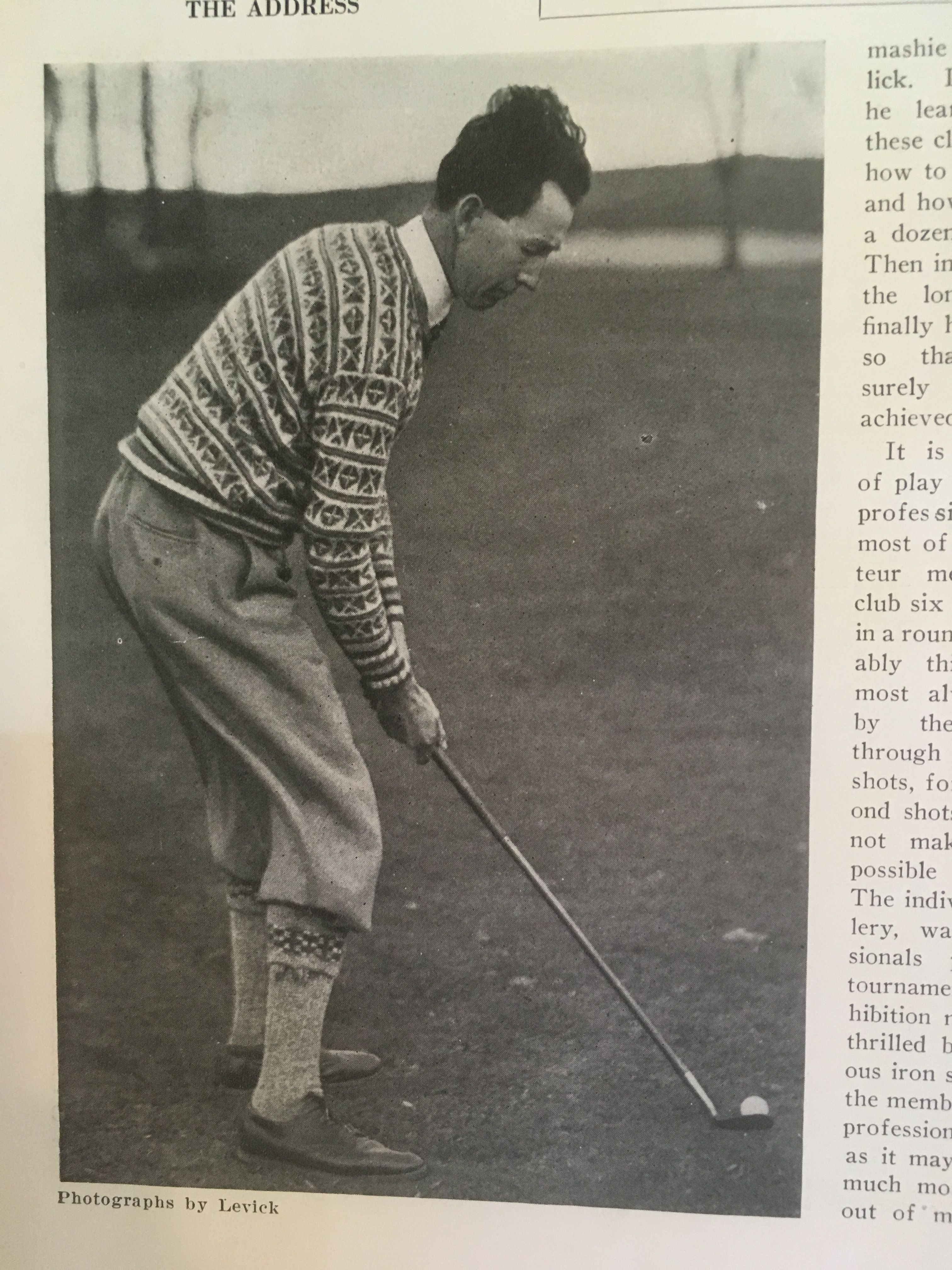In our golf shop there is a Golf Illustrated compilation of magazines with that title for the year 1925. The article I came across from January of that year was called, Learn The Game of Golf From the Bottom Up by Willie MacFarlane, Westchester Open Champion.
I expected to find some golf tips on starting the swing from the ground up, but the article wasn't like that at all. It provided pictures (shown below) with very little technique tips and more on what parts of the game the player should focus on.
What else was interesting was how similar many of the philosophies and observations are about players. The picture are worth a laugh, and the techniques displayed are definitely not the ideal.
The article starts out, "With all due respect to the putter as a championship decider, I would not say it is the most important club in the bag."
The writer sees the difference between professional and amateur as being because of exception iron play. One of the common observations that he references, as is today, is that the golfer gets instruction on his woods, and not his irons, he learns the game backwards.
He notices that caddies make up most of the golf pros in the industry, and they all started with wedges or higher lofted irons. They learned the game backwards, not with the woods but with close-in shots.
"The caddy starts at about twelve years of age, sometimes sooner. Why not start your own child at the same age?"
The above quote is something else noteworthy. Today I had a member inquire about junior camps for 5-7 year-old, and starting kids before twelve in 1925 was quite rare. As the author says, "Give him a small club and some balls to play with and let him watch good golfers."
Those are two big aspects of the big that haven't changed. The importance of approach shots, and using imitation as a means of good learning.
His closing statement;
"However, what I want to impress most upon my readers is that if they will only pay more attention to their iron shots and acquire a certain sense of control and power there, they will find that that will gradually spread over all their shots until, like the professional, they will have just as much confidence in their driver as they have in their mashie, and vice versa."
He goes on in his conclusion to say, "...the ground work must be started with the putter and mashie and worked up to the driver, and I am convinced that if any player will honestly strive along these lines he will make much speedier progress than in trying to develop by the driver to the putter system."
Learning from the green-to-tee was as important than, and as easily overlooked, as it is today.
Now, for a little commentary on the accompanying images. Which, like I mentioned, were strange because most of the article had little to no mention of technique in the image, or important aspects of positions.
The outfit is of course eye-catching, but I'll try not to be too distracted by it. Starting out, his right hand seems to be quite strong, and the club face is noticeably open. Another positive similarity is the head position, and tilt. I would guess this address is to give him a better chance to keep his head behind the ball, although it appears exaggerated, but is a very important point (reinforced strongly by Jack Nicklaus a few decades later).
Looking down the line, you would be convinced he is setting up to play a cut/fade looking at grip and alignment.
Looks a little un-athletic, right? His right lef straightens, not a fatal flaw of course, but combined with a little chicken wing it ooks a little off.
What is very cool about this down the line shot is you can see the way his left wrist angle lines up with, and in-turn controls, the club face angle.
It might be the over-sized pants, but something about this follow through makes me question what this gentleman's hips looked like. A big difference that can be noticed is how little it looks like his right foot rotates up onto the toes at the finish.
He is some sort of strange breed in the above picture, but I have to remember that this was over 90 years ago!
In closing, what I found most interesting about the article was the emphasis on learning from green-to-tee, and how difference the instructional pictures were from today.

